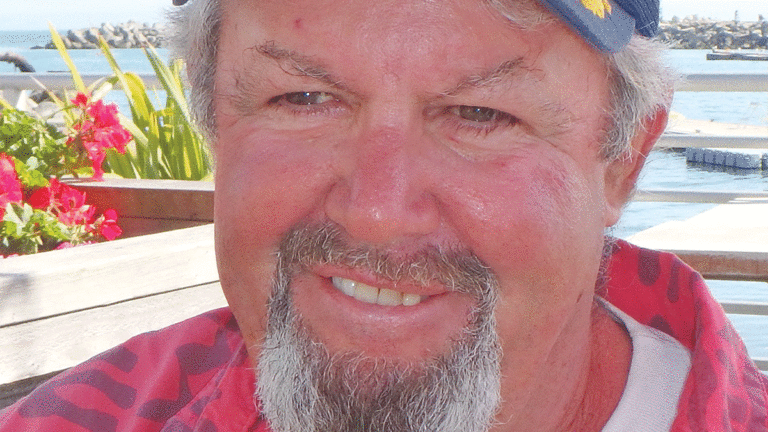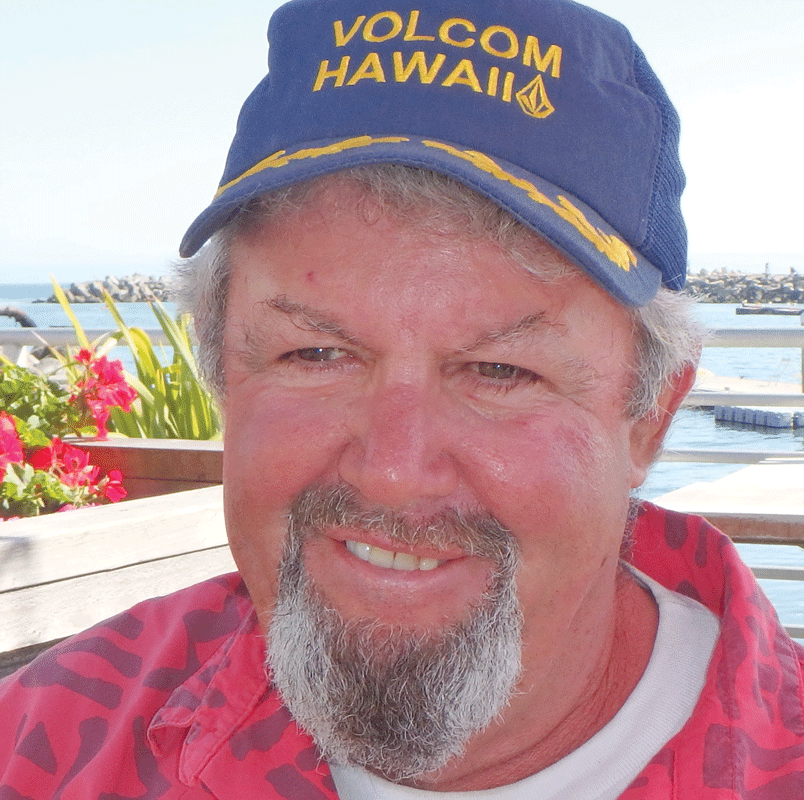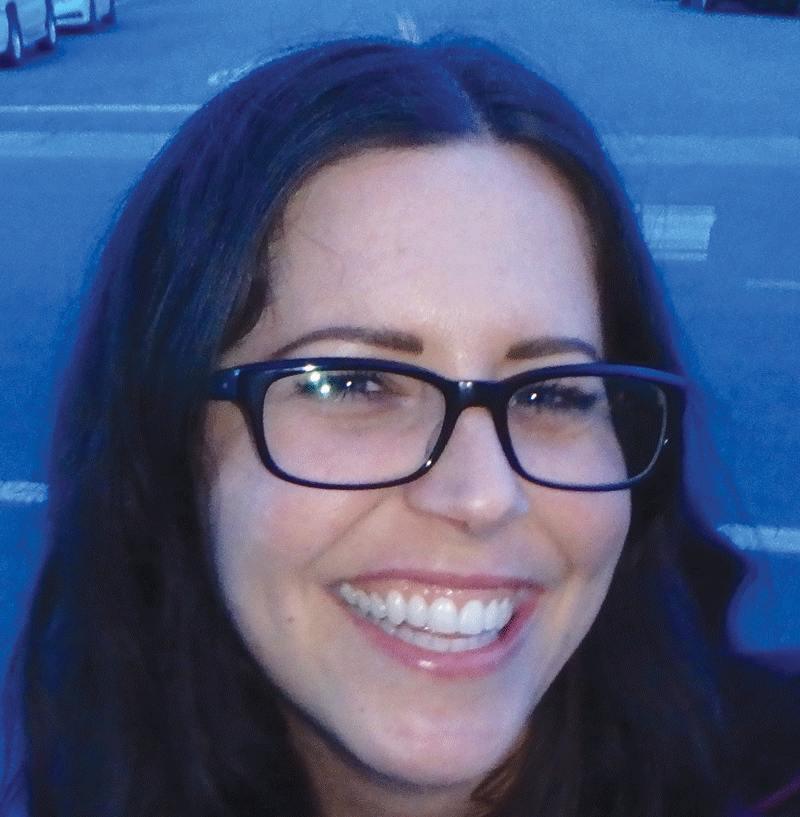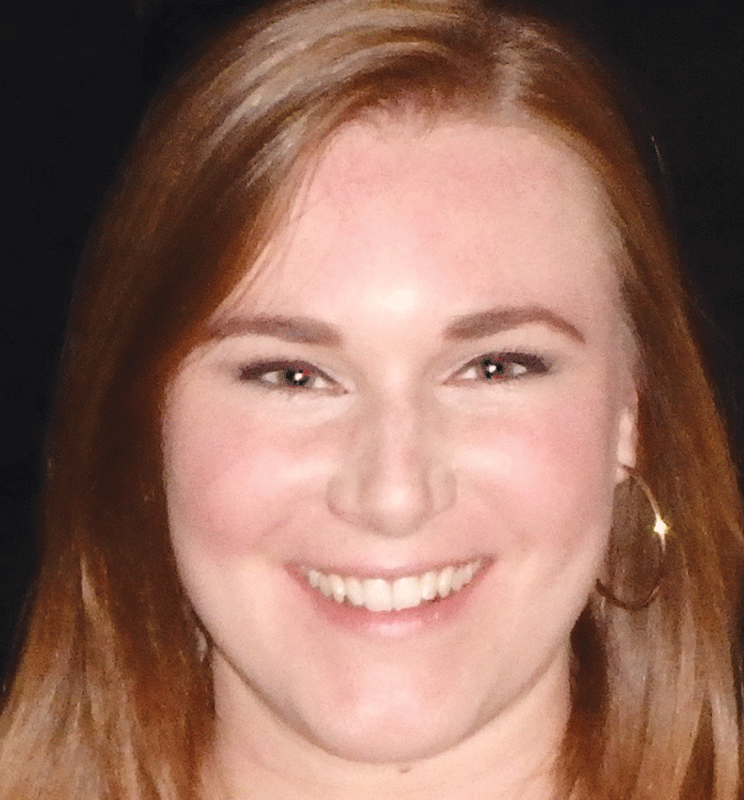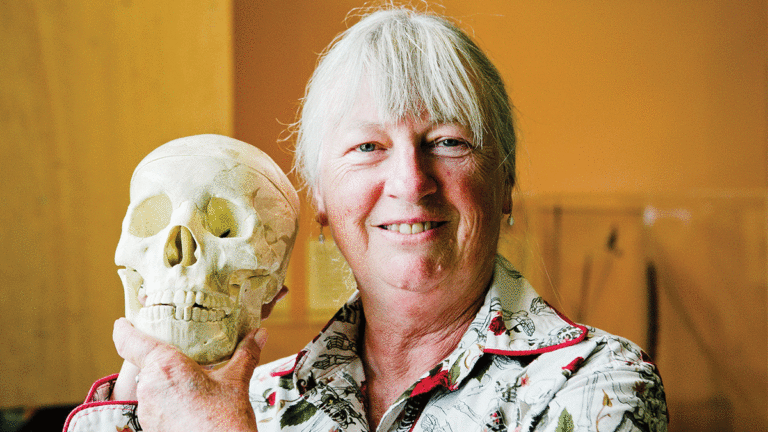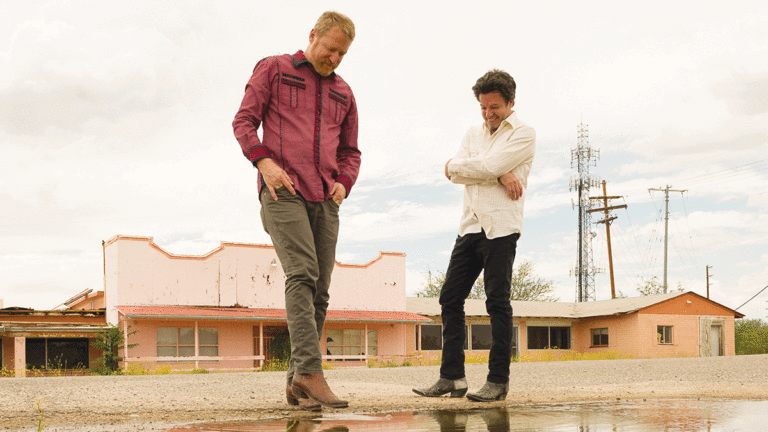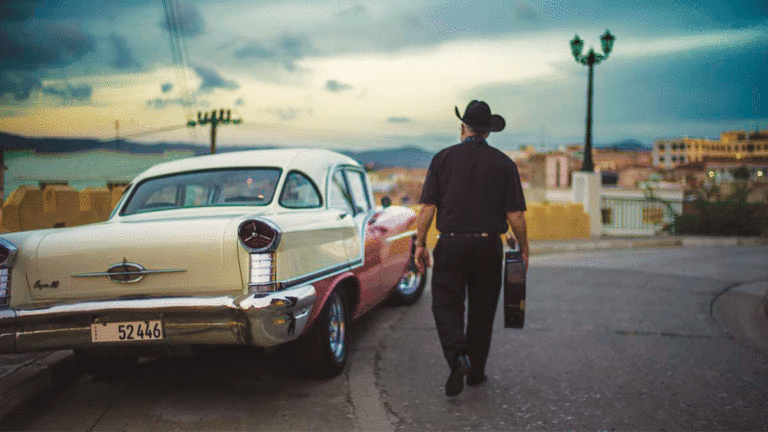Music picks for the week of May 31, 2017
THURSDAY 6/1
COUNTRY
JACKIE LEE
Hailing from Maryville, Tennessee, Jackie Lee is one of the rising stars of pop-country music. The baby-faced artist grew up singing in church with his three-piece band and listening to his dad’s classic country music. But Lee’s mom had a soft spot for ’80s pop music, and exposed the young Lee to artists like Michael Jackson and Phil Collins. Lee’s first foray into the Nashville music machine was as a straight-ahead country artist, but after his mom’s death in 2016, he did some soul-searching and decided to bring more of his influences into his music. The result is radio-friendly country music accented with electronics and what’s been dubbed a “modern sound.” CAT JOHNSON
INFO: 9 p.m. Catalyst, 1011 Pacific Ave., Santa Cruz. $12/adv, $15/door. 423-1338.
THURSDAY 6/1
FUNK
ELEKTRIC VOODOO
In many ways, San Diego’s music scene mirrors that of Santa Cruz’s. For instance, both cities loves good solid live dance music. Elektric Voodoo is a new band out of the great laidback southern California city that featuring lots of local faces people entrenched in the scene down there will be familiar with. The members have played with Jon Spencer Blues Explosion, G-Love, and Grace Potter and the Nocturnals. The band takes a lot of popular styles (blues, funk, swirling psychedelic rock, Latin music) and casually blends it together into a fun, feel-good, positive-vibe-filled package. AARON CARNES
INFO: 8:30 p.m. Moe’s Alley, 1535 Commercial Way, Santa Cruz. $7/adv, $10/door. 479-1854.
THURSDAY 6/1
FOLK/FUSION
JAYME STONE’S FOLKLIFE
If you’ve been around folk music for any length of time, you’ve likely heard the name Alan Lomax. An ethnomusicologist, folklorist, archivist, musician, activist and more, Lomax captured and preserved countless field recordings from the early to mid-20th century. On Thursday, Jayme Stone, who’s been dubbed “the Yo-Yo Ma of the banjo,” and his musical collaborative pay tribute to the Lomax legacy by reworking a number of songs from the Lomax collection, including Appalachian ballads, work songs, a cappella singing from Georgia’s Sea Islands and Bahamian sea shanties. CJ
INFO: 7 p.m. Kuumbwa Jazz, 320-2 Cedar St., Santa Cruz. $22/adv, $27/door. 427-2227.
FRIDAY 6/2
CELTIC
WAKE THE DEAD
Tired of the same old cover bands? Then Wake the Dead is here to let the songs fill the air with a unique twist. Since the year 2000, the seven-piece jam band has covered everyone’s favorite Grateful Dead songs—along with classic, 1960s standards—with Celtic flavor, turning the twirling Deadhead dances into Irish jigs. The Bay Area band is touring off its fourth album, Deal, which was actually one of two records it released last year. So light a candle for St. Stephen, adorn your hair with scarlet begonias and get those chips cashed in to keep on truckin’ this Friday at the Kuumbwa. MW
INFO: 8 p.m. Kuumbwa, 320 Cedar St. #2, Santa Cruz. $20. 427-2227.
FRIDAY 6/2
ROCK
JESSE COLIN YOUNG
One of the finest songwriters of our time, Jesse Colin Young has been singing about social justice, peace and the environment for the last 50 years. An Americana artist before Americana was a thing, Young fuses American roots music with rock, blues, folk and jazz—even bringing horn players into his band—to create a genre-transcending sound of his own. And holding the whole thing together is Colin’s honest, enduring voice. CJ
INFO: 8 p.m. Rio Theatre, 1205 Soquel Ave., Santa Cruz. $30/gen, $45/gold. 423-8209.
SATURDAY 6/3
INDIE
PRISM TATS
LA’s Prism Tats is a rock ’n’ roll outfit much in the way that Tom Waits plays American roots music. In other words, the elements are all there, but it just sounds strange when it’s all put together. Prism Tats’ self-titled debut album was released last September, and is the solo creation of Grant van der Spek, originally from South Africa, and lover of all things rock, as well as crazy waking dream sub-realities and drum machines. He somehow takes these primary colors to make a painting that feels like what would pass for Picasso’s version of the Beatles. AC
INFO: 9 p.m. Crepe Place, 1134 Soquel Ave., Santa Cruz. $10. 429-6994.
SATURDAY 6/3
REGGAE
ITALS
The Itals were one of the great multi-vocal, roots reggae harmony groups in the ’70s, though not as huge as many of the household names from that time. They really found their footing in the ’80s when the easy-grooving, Rasta-loving reggae sounds were being replaced by aggressive, hip-hop-influenced dancehall. The Itals were one of the key groups that helped keep the reggae flame lit during that time. They continue to do so to this day. Ancestree Reggae opens. AC
INFO: 9 p.m. Moe’s Alley, 1535 Commercial Way, Santa Cruz. $15/adv, $20/door. 479-1854.
SATURDAY 6/3
ROCK
JOYRIDE & HEARTLESS
Sometimes a cover band comes along that nails the tribute songs so well, it becomes a phenomenon on its own. This Saturday Don Quixote’s has not one, but two of these rare gems. Joyride has been the Bay Area’s premiere—and only—Cars tribute band delighting audience members with the pop hits of Ric Ocasek, Benjamin Orr and the rest of the New Wave boys. On the opposite end of the spectrum, Heartless delivers the sounds of ’70s female-fronted hard rock group Heart. Both acts transcend time with classic hits that are good for every magic man and even your best friend’s girl. MW
INFO: 8 p.m. Don Quixote’s, 6275 Hwy. 9, Felton. $10. 335-2800.
MONDAY 6/5
JAZZ
JEAN-LUC PONTY
When French violinist Jean-Luc Ponty appeared on the jazz scene in the late 1960s, the instrument hadn’t contributed anything new to the genre for more than a generation. Plugging in, the conservatory-trained master muscled his way into era-defining jazz/rock fusion bands like John McLaughlin’s Mahavishnu Orchestra, while blowing away rock and pop audiences with Frank Zappa and Elton John. On this tour, the 74-year-old innovator is revisiting some of the ambitious compositions from his prolific Atlantic years (circa 1975-85) with some of the players who recorded with him in the 1980s, including keyboardist Wally Minko, guitarist Jamie Glaser, bassist Baron Browne, and drummer Rayford Griffin (a nephew of trumpet legend Clifford Brown). ANDREW GILBERT
INFO: 7:30 p.m. Rio Theatre, 1205 Soquel Ave., Santa Cruz. $32/gen, $45/gold. 427-2227.
IN THE QUEUE
DEVA PREMAL & MITEN
Spiritual chant masters. Wednesday at Rio Theatre
T.I.
Hip-hop out of Atlanta. Thursday at Catalyst
HARPIN’ JONNY & THE PRIMADONS
Rock, groove and blues. Friday at Don Quixote’s
ROYAL JELLY JIVE
Soul, rock, swing and hip-hop fusion. Friday at Moe’s Alley
KENDRA MCKINLEY
Bay Area chamber-pop. Monday at Crepe Place








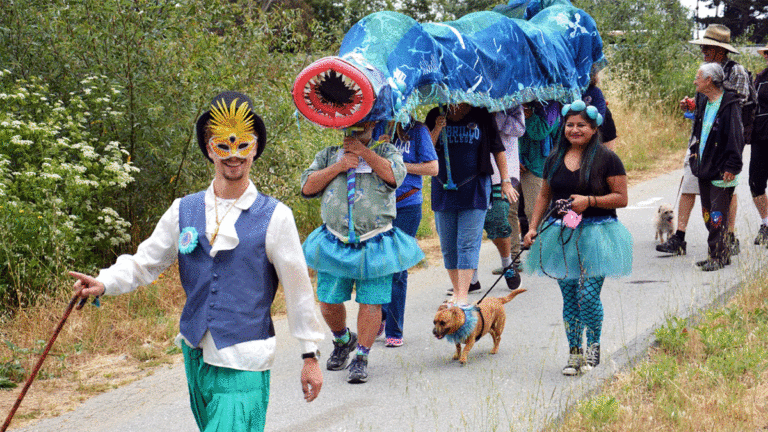
 Celebrate the garden that helped launch the organic farming and gardening movement in the U.S. with Alan Chadwick Garden’s 50th anniversary. This year’s festival will feature an afternoon of poetry and music from noon to 2:30 p.m. Folk harp player Shelley Phillips, the 2017 Santa Cruz Artist of the Year, will play, and nine regional poets—including Angel Dominguez, Michael Hannon, and Persis Karim—will read their work.
Celebrate the garden that helped launch the organic farming and gardening movement in the U.S. with Alan Chadwick Garden’s 50th anniversary. This year’s festival will feature an afternoon of poetry and music from noon to 2:30 p.m. Folk harp player Shelley Phillips, the 2017 Santa Cruz Artist of the Year, will play, and nine regional poets—including Angel Dominguez, Michael Hannon, and Persis Karim—will read their work.  Join forces with Santa Cruzans to cheer on the local LGBTQ community for the biggest pride parade on the Central Coast. In this queer visibility action, local organizations, allies, supportive groups, churches, candidates, ensembles, parents, performers and children show pride, enthusiasm and love. The parade kicks off at 11 a.m., followed by a festival from noon until 4 p.m. featuring dance, vendors, spoken word artists, musicians, food trucks and a kids’ space. All ages are welcome for this family-friendly Pride event.
Join forces with Santa Cruzans to cheer on the local LGBTQ community for the biggest pride parade on the Central Coast. In this queer visibility action, local organizations, allies, supportive groups, churches, candidates, ensembles, parents, performers and children show pride, enthusiasm and love. The parade kicks off at 11 a.m., followed by a festival from noon until 4 p.m. featuring dance, vendors, spoken word artists, musicians, food trucks and a kids’ space. All ages are welcome for this family-friendly Pride event.  The Mary Porter Sesnon Art Gallery presents their 31st annual Irwin Scholarship Award exhibition. UCSC’s most promising emerging artists from the art department will showcase paintings and photos that transcend the boundaries of 2D representation while video and audio works will create a more intimate experience between spectator and artist. The exhibition explores the contemporary consciousness through an unconventional lens, with a rich collection of works that delve into the personal as political, expanding individualized themes into a larger social, political, environmental framework.
The Mary Porter Sesnon Art Gallery presents their 31st annual Irwin Scholarship Award exhibition. UCSC’s most promising emerging artists from the art department will showcase paintings and photos that transcend the boundaries of 2D representation while video and audio works will create a more intimate experience between spectator and artist. The exhibition explores the contemporary consciousness through an unconventional lens, with a rich collection of works that delve into the personal as political, expanding individualized themes into a larger social, political, environmental framework.  Ever find yourself on your lunchbreak, the weather gorgeous, the birds singing, looking for a place to sit outside and bask in the glory of downtown? Finally, the time has come. Four years in the making, the new community plaza and marketplace will soon be open to the public and this Friday, June 2, community members will be able to get a sneak peek. Festivities will kick off with Camille Utterback (above) discussing her work, followed by live music, art activities, yoga classes, and free exhibitions. The evening will conclude with the beginning of the Ebb and Flow Festival.
Ever find yourself on your lunchbreak, the weather gorgeous, the birds singing, looking for a place to sit outside and bask in the glory of downtown? Finally, the time has come. Four years in the making, the new community plaza and marketplace will soon be open to the public and this Friday, June 2, community members will be able to get a sneak peek. Festivities will kick off with Camille Utterback (above) discussing her work, followed by live music, art activities, yoga classes, and free exhibitions. The evening will conclude with the beginning of the Ebb and Flow Festival. 